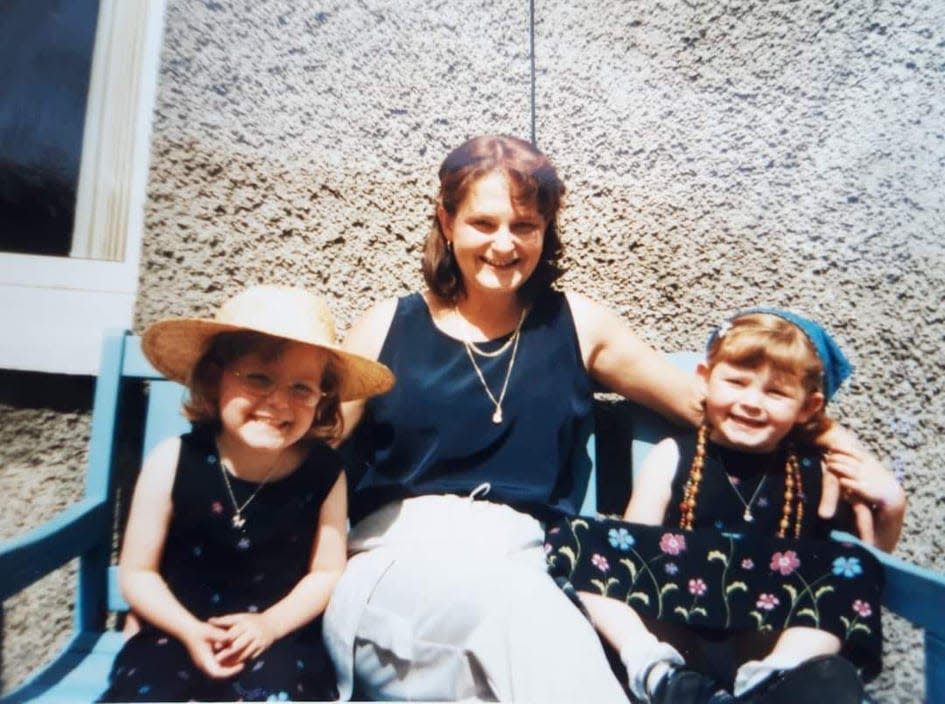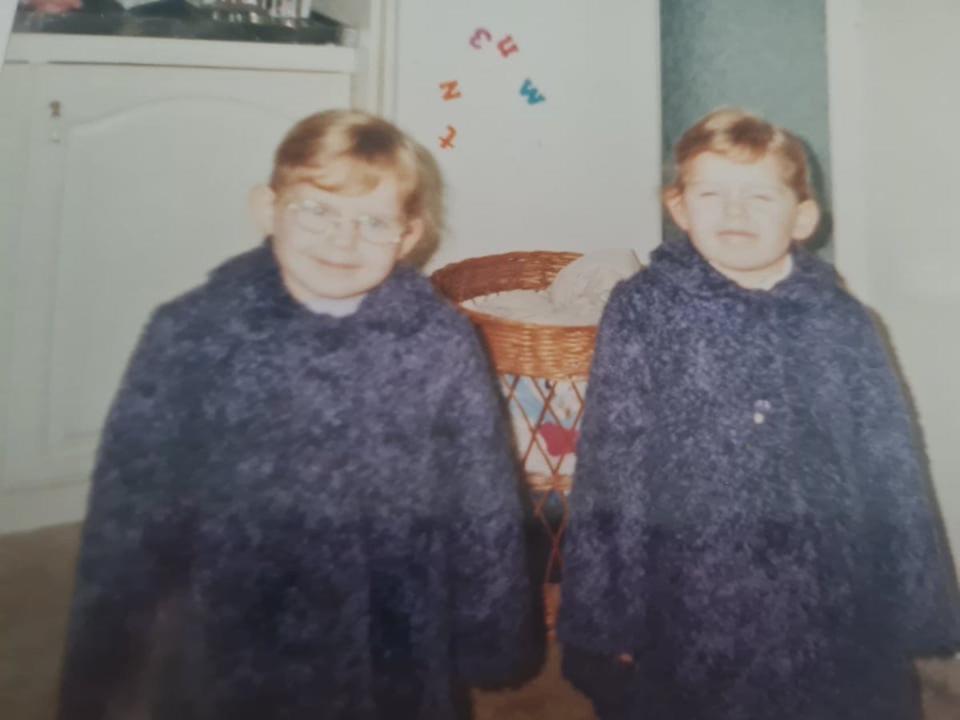My identical twin and I only started dressing alike as adults. It's the way it should be.

My identical twin sister and I refused to wear the same clothes as children.
It helped us feel like individuals while everyone got us mixed up.
As adults, we appreciate our similarities and differences, sharing clothes and memories.
My identical twin sister, Aimee, and I were complete opposites growing up.
Aimee loved makeup and musicals, and I loved skateboarding and blaring Avril Lavigne from my bedroom. Aimee went to dance classes while I wrote short stories and buried my head in books.
Despite our clear differences, our family, friends, and teachers often struggled to tell us apart.
While I loved being a twin, our physical similarities sometimes prevented me from feeling like my own person.

When we became old enough to choose our own clothes, it became an unspoken rule that Aimee and I would never be caught dead in the same outfit.
Getting called by the wrong name was annoying, and we felt we didn't need to give people another reason to get us mixed up.
But that all changed when we became adults.
Our parents encouraged us to dress differently
It was difficult to avoid this rule when it came to dressing for school.
Students are required to wear a uniform at most schools in the UK, so it wasn't just Aimee and I who looked similar — everyone did.
We found subtle ways to change things up. For example, Aimee and I both got school bags and jackets from Jane Norman, a popular brand that seemingly every British schoolgirl wore in the 2000s. We made sure they were completely different styles, and years later, an old friend confessed to me that looking at our bags was the only way she could tell Aimee and me apart.
We were lucky that our parents encouraged our individual styles. Growing up, they rarely purchased identical outfits for us and would only dress us alike (begrudgingly) if the outfits were a gift from a family member.

As more people are having twins than ever before, tweaking the way twins are parented is incredibly important.
According to research by Oxford University in 2021, the number of twins born in the world reached an all-time high, with 1.6 million twins born each year. That could be partly due to delayed childbearing and techniques like IVF, in which the rate of conceiving identical twins is slightly higher than that of natural conception.
Speaking to BBC News in 2017, Keith Reed, former chief executive of the Twins and Multiple Births Association, said dressing twins differently and avoiding using phrases like "the twins" can be helpful in encouraging individuality.
"If they are used to always being together or always wearing the same clothes, then the older they get the more distressed they may become if you try to make changes," Reed told the outlet.
Things changed after we grew up
It became easier for people to tell the difference between us as we got older.
Even though we are identical, we do have a few physical differences, and these became more defined when we entered adulthood.
Aimee is a trained dancer, so naturally, my body does not look the same as hers.
We're now in our late 20s, and it's been years since somebody got us mixed up.
We lead completely different lives, though we still share a couple of the same childhood friends. But unlike when we were kids, Aimee and I now don't mind dressing alike.
We regularly borrow each other's clothes and sometimes dress similarly. For example, a couple of years ago, I noticed I had accidentally ordered two of the same white sweater dresses. I gave the second dress to Aimee, and we both wore it at Christmas.
We even posted photos of the matching outfits on social media.
I'm so glad that we have now reached the point where we aren't afraid to embrace being twins.
In order to accept our similarities, we had to explore our differences — and I wouldn't have it any other way.
Read the original article on Business Insider

